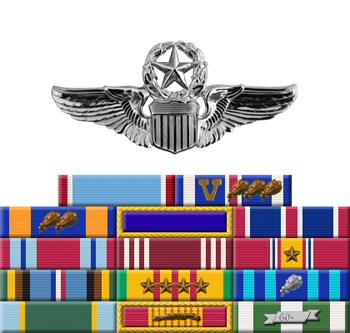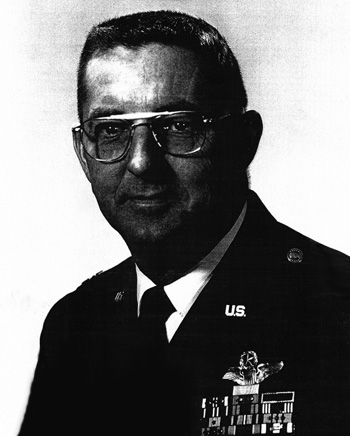
|
Larry D. Armstrong |
 |
|||
| Rank, Service | ||||
Colonel O-6, U.S. Air Force |
||||
| Veteran of: | ||||
|
||||
| Tribute: | ||||
Larry Armstrong was born on May 12, 1929, in Shamrock, Missouri. He enlisted in the U.S. Air Force on June 29, 1951, and entered the Aviation Cadet Program in April 1952. Armstrong was commissioned a 2d Lt and was awarded his pilot wings at Foster AFB, Texas, in April 1953. After completing advanced fighter interceptor training, he was assigned to the 15th Fighter Interceptor Squadron (FIS) at Davis Monthan AFB, Arizona, from September 1953 to June 1956. Armstrong then transferred to the 41st FIS at Yokota AB, Japan, and then Anderson AFB, Guam, where he served until July 1958. His next assignment was to the 326th FIS at Richards-Gebaur AFB, Missouri, where he served from July 1958 to January 1964. He was assigned to the 4th FIS at Misawa AB, Japan, from January 1964 to July 1965, and then completed F-4C Phantom II Combat Crew Training before joining the 4th Tactical Fighter Squadron at Eglin AFB, Florida. Maj Armstrong began flying combat missions in Southeast Asia with the 435th Tactical Fighter Squadron at Ubon Royal Thai AFB, Thailand, in July 1967, and he completed his tour in July 1968. He served with the 45th, 46th, and 27th Tactical Fighter Squadron at MacDill AFB, Florida, from July 1968 to June 1973, and then he became an Air Force Liaison Officer to Civil Air Patrol. Col Armstrong's final assignment was at Shaw AFB, South Carolina, where he retired from the Air Force on July 1, 1978. Larry Armstrong died on March 2, 1997, and is buried at Arlington National Cemetery. |
||||
|
||||

